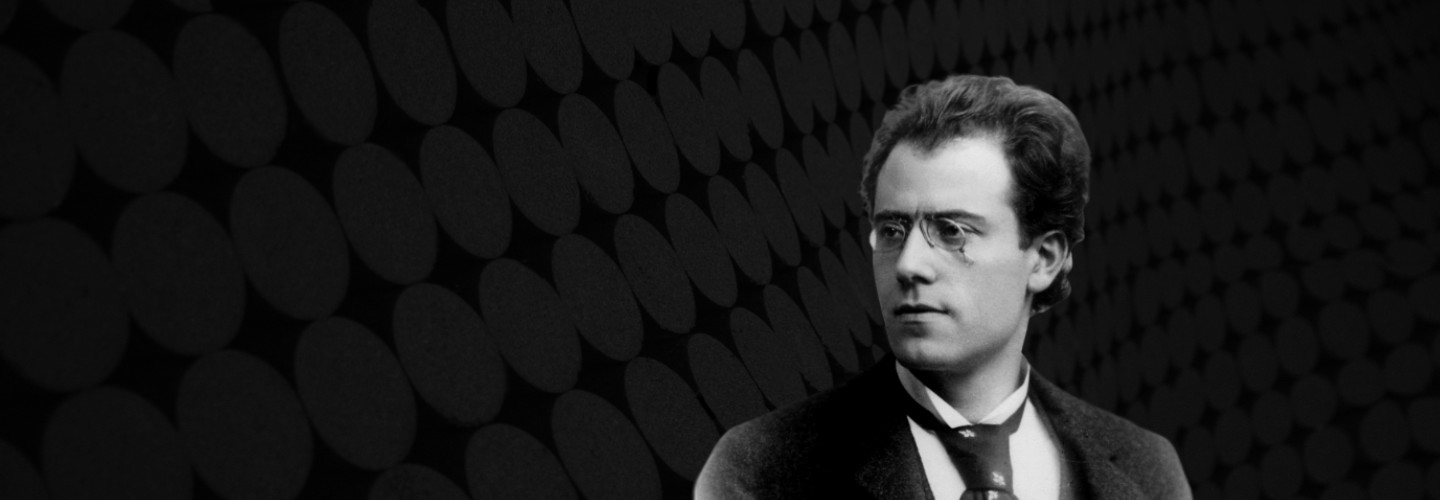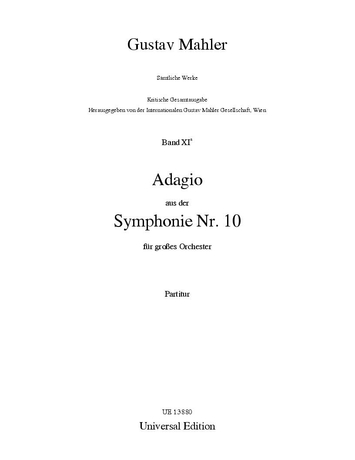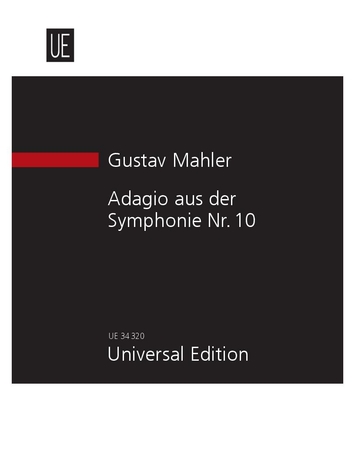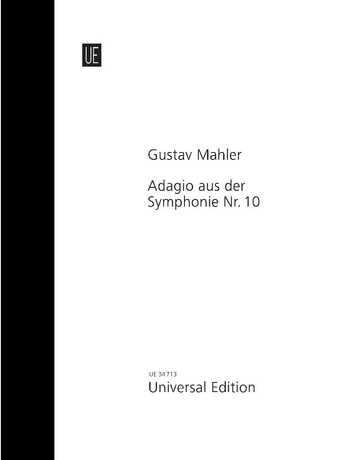

Gustav Mahler
Adagio from Symphony No. 10
Short instrumentation: 3 3 3 3 - 4 4 3 1 - hp, str
Duration: 22'
Herausgeber: Erwin Ratz
Klavierauszug von: Erwin Ratz
Instrumentation details:
1st flute
2nd flute
3rd flute (+picc)
1st oboe
2nd oboe
3rd oboe
1st clarinet in Bb
2nd clarinet in Bb
3rd clarinet in Bb (+cl(A))
1st bassoon
2nd bassoon
3rd bassoon
1st horn in F
2nd horn in F
3rd horn in F
4th horn in F
1st trumpte in F
2nd trumpte in F
3rd trumpte in F
4th trumpte in F
1st trombone
2nd trombone
3rd trombone
bass tuba
harp
violin I
violin II
viola
violoncello
contrabass
Mahler - Adagio aus der 10. Symphonie for orchestra
Printed/Digital
Translation, reprints and more

Gustav Mahler
Adagio aus der Symphonie Nr. 10Orchestration: for piano 4 hands
Type: Klavierauszug

Gustav Mahler
Mahler: Adagio from the 10th Symphony for orchestraOrchestration: for orchestra
Type: Partitur

Gustav Mahler
Mahler: Adagio from the 10th Symphony for orchestraOrchestration: for orchestra
Type: Studienpartitur

Gustav Mahler
Mahler: Adagio from the 10th Symphony for orchestraOrchestration: for orchestra
Type: Dirigierpartitur
Binding: Hardcover
Sample pages
Audio preview
Work introduction
Begun between July and September 1910 in Toblach, Mahler’s Symphony No. 10 remained a fragment; however, the surviving manuscript provides indications of the composition’s form and content. The autograph sketch lays out all the symphony’s essentials and all five movements are present in the short score.
The first movement, an adagio, and the third, called Purgatorio, were premiered on 12 October 1924 by Franz Schalk at the Vienna State Opera; Ernst Krenek had prepared and completed the musical materials. The full score of those two movements was not published until 1951.
This basic source material provides a clear view of the symphony’s fundamental structure; in its style, the work continues that of the 9th and, in some phrases, embarks on uncharted territory beyond that. This is especially true of the Adagio, enriched by its harmony, with its advanced modulations and chromatics; note bars 203-208, where a garish, dissonant chord of nine pitches builds up (repeated like a quote in the finale). The unmistakeable expressive power in this passage corresponds to rhythmic innovations which anticipate Stravinsky’s “emancipation of rhythm.”
Overstepping the traditional limits of emotional radicalism, this Adagio is certainly the summit of Mahler’s late work – more so than the Abschied movement of Das Lied von der Erde and the finale of his 9gh symphony. It is a written-out deliverance, a farewell. (To complete the picture, we may note the marginal remarks on his autograph – some of the most personal he ever left – and that his marriage to Alma was disintegrating at the time).
